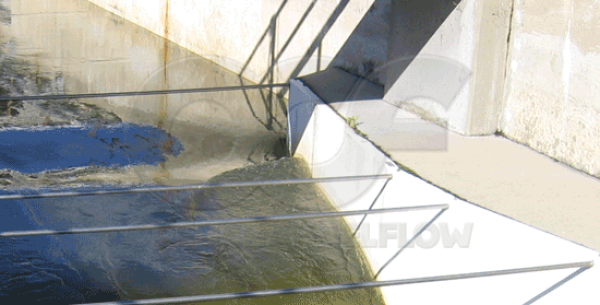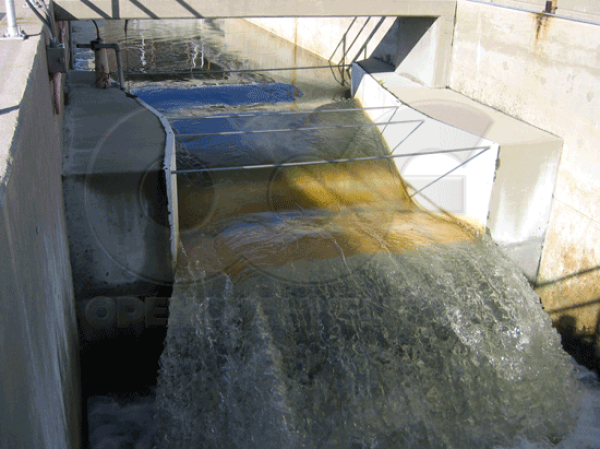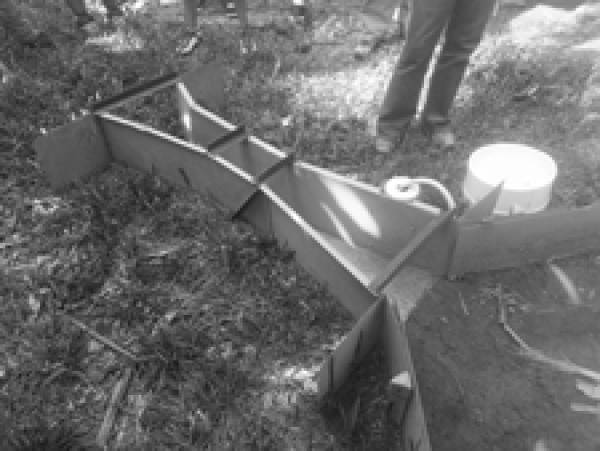This website uses a variety of cookies, which you consent to if you continue to use this site. You can read our Privacy Policy for
details about how these cookies are used, and to grant or withdraw your consent for certain types of cookies.
Field Report - Flat Wing Walls and Parshall Flumes
In an earlier article we discussed the use of flat 45ª wing walls to transition flow into Parshall flumes. The article focused on Blaisdell’s observation that a standing wave and wave trough were generated downstream of the intersection of the inlet 45ª flat wing wall and the flume and how, as flow increased, this wave / trough phenomena adversely impacts the ability to accurately determine flow through the flume.
A reader in Alabama was kind enough to submit the following photos of their installation and some background:
For years we’ve had a problem measuring flow in our effluent flume. At low flows the readings seemed fine, but as flow increased we noticed discrepancies in the flow numbers. We could see a hump and dip in the water’s surface but no one could tell us why it was happening - not the engineers, consultants, or reps. The hydraulics looked fine; there was enough straight run, flow wasn’t backed up, the wingwalls came in a 45 degree angles, etc. It was a real head scratcher.
It was only after reading your blog one night that I realized that what you were describing was exactly what we were seeing! As flow rose, the hump and dip moved towards the point of measurement. As flow dropped, the hump and dip moved back upstream.

I got Maintenance to make a metal plate to extend the angle of the inlet wall. When we had the chance, we diverted flow in the plant and installed the plate on the right side of the channel. We wanted to be able to see if the plate made a difference, so we only did one side.

As you can tell from the photos, the plate worked! The right side channel flow is nice and smooth, while the left side channel shows the hump and dip even at these low flows.
Thanks for helping us solve this problem! If I hadn’t read your article we never would have known!
And that, I think, sums up why we do these blog posts. Not to sell you something, but to educated and inform you. Hopefully as you read these blogs you will take away something of use or interest to you; something that can help you solve your problems and make your day a little easier.
If you have a flow measurement problem (or success) let us know. We are happy to help!
Related Blog Posts
Explore more insights in our blog.

LOCATIONS IN ATLANTA, GA & BOISE, ID





